Selecting the right flashlight requires careful consideration, and one of the most critical factors to evaluate is its waterproof rating, typically indicated by the IPX code. With a multitude of options available, understanding the subtleties of these ratings is vital to ensure you choose a flashlight that perfectly matches your specific needs.
In this guide, we’ll not only explore the intricacies of IPX4, IPX5, IPX6, IPX7, and IPX8 ratings but also present the differences between water-resistant, water-repellent, and waterproof flashlights, offering you a comprehensive understanding of what each feature means for real-world performance.
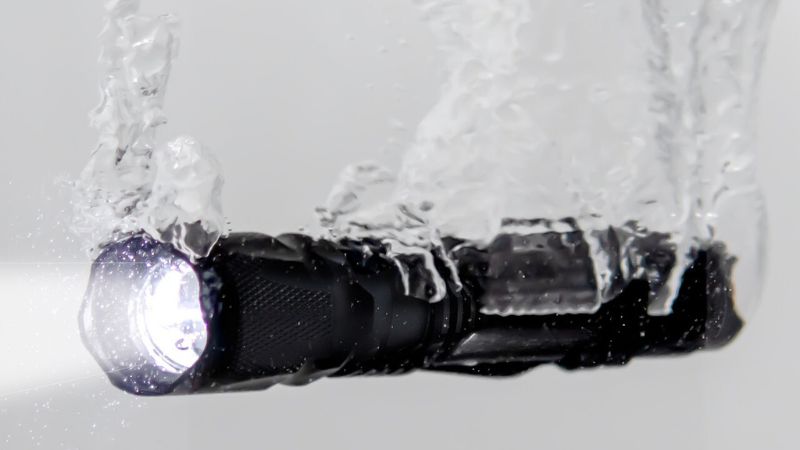
The Difference Between a Water-Resistant, Water-Repellent, and Waterproof Flashlight
Before getting into IPX ratings, it’s essential to understand the differences between the three kinds of flashlights, as these terms are frequently used but often misunderstood.
 |
|
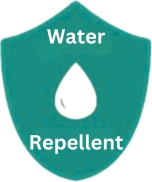 |
|
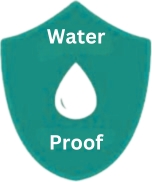 |
|
Understanding IPX Ratings: A Primer
With a clear understanding of these key terms, we can now move on to explore the IPX ratings in detail. The IP (Ingress Protection) rating system is an international standard used to define how well electronic devices, including flashlights, resist the intrusion of solid particles (like dust) and liquids (like water). The digits that follow “IP” characterize the level of protection.
However, when it comes to flashlights, we often see “IPX” instead of a full IP rating. Here, “X” signifies that the device hasn’t been tested or isn’t rated against solid particles (dust). The important focus lies on the second digit (the number after X), which indicates the degree of water resistance.
Breakdown of Common IPX Ratings
- First Digit (Protection Against Solids):
This digit ranges from 0 to 6 and indicates the level of protection against solid objects:
| Level | Protection Against | Description |
| X | Not Tested | The device wasn’t tested for protection against solid objects |
| 0 | No Protection | No protection against contact and ingress of objects |
| 1 | Objects larger than 50 mm | Protection against large surfaces (e.g., hands), but not deliberate contact |
| 2 | Objects larger than 12.5 mm | Protection against objects like fingers or similar-sized objects |
| 3 | Objects larger than 2.5 mm | Protection against tools or thick wires |
| 4 | Objects larger than 1 mm | Protection against most wires, screws, or other small objects |
| 5 | Dust Protected | Limited ingress of dust is permitted, but it won’t interfere with the operation |
| 6 | Dust Tight | Complete protection against any ingress of dust |
Second Digit (Protection Against Water):
This digit ranges from 0 to 8 (with some variations, like IPX9K) and indicates the level of protection against liquids, mainly water:
| Level | Protection Against | Description |
| X | Not Tested | The device wasn’t tested for water protection |
| 0 | No Protection | No protection against liquids |
| 1 | Dripping Water | Protection against vertically dripping water (e.g., condensation) |
| 2 | Dripping Water Tilted up to 15° | Protection against falling drops when the device is tilted at any angle up to 15° from its normal position |
| 3 | Spraying Water | Protection against water spraying at up to a 60° angle from vertical |
| 4 | Splashing Water | Protection against splashing water from any direction |
| 5 | Water Jets | Protection against water jets from a nozzle from any direction (low pressure) |
| 6 | Powerful Water Jets | Protection against powerful water jets from any direction (high pressure) |
| 7 | Immersion up to 1 Meter | Protection against temporary immersion in water (e.g., up to 1m depth for up to 30 min) |
| 8 | Continuous Immersion, 1 Meter or More | Protection against continuous immersion in water (specific conditions defined by the manufacturer) |
The IPX Ratings in Action: Which One Is Right for You?
To make an informed decision, it’s crucial to understand what each IPX rating means in practical, real-world scenarios. Here’s a detailed look at IPX4, IPX5, IPX6, IPX7, and IPX8, along with examples of situations where each might be most useful.
IPX4: Everyday Protection for Splashes and Rain
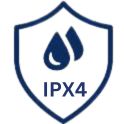
Definition: Flashlights with an IPX4 rating are designed to withstand water splashes from any direction. This level of protection ensures that the flashlight can handle moisture, such as light rain or accidental splashes, without getting damaged.
Where it Shines: IPX4 flashlights are well-suited for everyday use, particularly in scenarios where the flashlight might be exposed to moisture but not direct water jets or immersion. If you’re a hiker, camper, or someone who spends time outdoors, an IPX4-rated flashlight provides adequate protection against unexpected weather changes or splashes.
Example Usage: Imagine you’re on a weekend camping trip, and a sudden downpour starts while you’re out at night. Your IPX4-rated flashlight will continue to function properly despite the raindrops falling from all directions. Whether it’s hanging by your tent, walking along a trail, or navigating a dark path, an IPX4 flashlight will serve you well in such moderately damp environments.
IPX5: Resistant to Sprays and Low-Pressure Water Jets
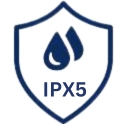
Definition: An IPX5-rated flashlight offers protection against low-pressure water jets coming from any direction. This rating indicates that the device can handle more robust water exposure than simple splashes, making it ideal in environments where such exposure might be frequent.
Where it Shines: IPX5 flashlights are appropriate for scenarios where the flashlight may be exposed to directed water, such as near shorelines, during light-duty cleaning tasks, or in moist outdoor settings. These flashlights are a step up from IPX4, offering more assurance in managing wet conditions.
Example Usage: Consider you’re washing your car at night, or you’re caught outside during a strong rain. An IPX5 flashlight won’t falter if it’s sprinkled with water from a garden hose or if it receives a heavy splash. It’s robust enough to handle direct hitting water that’s common in such scenarios, all while providing the brightness you need to complete your task.
IPX6: Protection Against Powerful Water Jets and Waves

Definition: Flashlights rated at IPX6 can withstand powerful water jets, making them highly resistant to forced water. This level of protection is significant for those who venture into more extreme conditions or who need a flashlight that can endure rough weather and aggressive water exposure.
Where it Shines: If your activities take you anywhere near water—whether it’s sailing, heavy rains, or stormy conditions—an IPX6-rated flashlight is essential. These lights are designed to take a beating from high-pressure water without compromising performance, making them reliable in the most intense environments.
Example Usage: Picture yourself on a fishing trip where you’re faced with sudden stormy weather at sea. The waves are splashing over the side of the boat, and everything is soaked. Your IPX6-rated flashlight will remain operational despite being hit with strong water jets and waves. It’s a must-have for environments where powerful water exposure is inevitable.
IPX7: For Complete Peace of Mind with Submersion
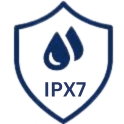
Definition: An IPX7-rated flashlight can be submerged in water up to a depth of 1 meter for 30 minutes without suffering ill effects. This makes it ideal for situations where there is a significant risk of the flashlight being dropped into water or used in very rainy conditions.
Where it Shines: IPX7 flashlights excel in wet environments where accidental submersion could occur. Whether you’re kayaking, involved in outdoor rescue operations, or working in extremely wet conditions, this level of waterproofing provides the reliability you need.
Example Usage: Imagine being on a kayaking adventure, and your flashlight accidentally slips into the river. An IPX7-rated flashlight can be retrieved after being fully submerged and still work perfectly. This rating offers peace of mind in any environment where your gear might go underwater, intentionally or accidentally.
IPX8: Extended Protection for Deep and Prolonged Submersion
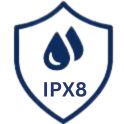
Definition: Flashlights with an IPX8 rating are designed to withstand continuous immersion in water beyond 1 meter for prolonged periods of time, with specific conditions defined by the manufacturer. The exact depth and duration depend on the particular product specifications but generally offer superior waterproofing compared to IPX7.
Where it Shines: IPX8 flashlights are perfect for extreme conditions where prolonged submersion is expected. This includes deep-sea diving, underwater search and rescue operations, and other activities where the flashlight will be used in deep water consistently.
Example Usage: Suppose you’re a diver exploring a coral reef or conducting underwater inspections at significant depths. In such scenarios, an IPX8-rated flashlight ensures reliable performance even after spending extended periods submerged in water at considerable depths.
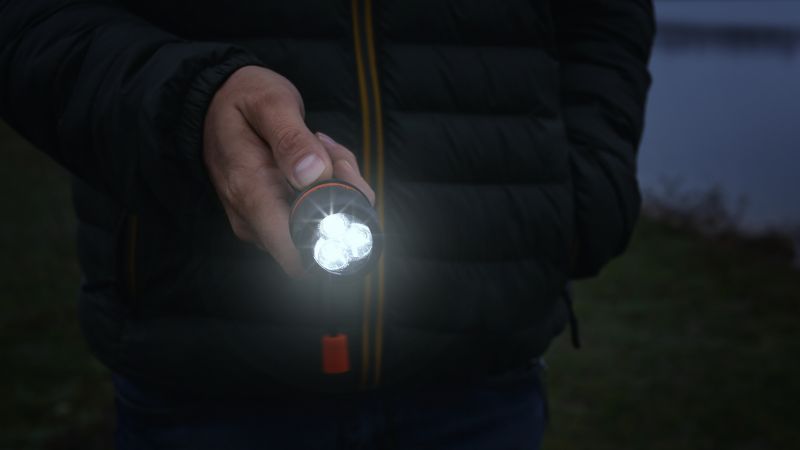
Choosing the Right IPX Rating: Tailoring Your Choice to Your Needs
Now that you’ve reviewed what each IPX rating signifies, how do you decide which one is right for you? The answer lies in understanding the specific conditions in which you’ll be using your flashlight.
Key Considerations:
- Your Environment: Consider the places you’ll be using the flashlight. Is it primarily for indoor use, or will you be taking it into rugged outdoor environments where weather and water conditions can be unpredictable?
- Potential Exposure:Reflect on how much exposure to water your flashlight might face. Light rain is one scenario, but if there’s a chance it could be submerged or exposed to high-pressure water jets, a higher IPX rating is more appropriate.
- Activity & Usage: Tailor your choice based on what you intend to do. For occasional outdoor use, an IPX4 or IPX5 flashlight may be sufficient. Regular water exposure might warrant an IPX6 light, while activities involving water submersion call for IPX7 protection. If your adventures involve deep water exploration or prolonged submersion, an IPX8-rated flashlight will offer the highest level of reliability.
Recommendations:
- For Urban and Casual Outdoor Use: An IPX4-rated flashlight is generally sufficient for day-to-day city life or light outdoor activities such as walking, hiking, or camping, where you may encounter occasional rain.
- For Extended Outdoor or Industrial Use: An IPX5 or IPX6 flashlight should be your go-to. These ratings are ideal for environments where the flashlight will be exposed to more challenging conditions with greater water exposure, such as construction sites or heavy rainstorms.
- For Marine or Extreme Conditions: If there’s any chance you’ll be using your flashlight near large bodies of water or during activities like scuba diving, the best reassurance comes from an IPX7 or IPX8 rating. These flashlights are designed to withstand submersion and prolonged water exposure, ensuring reliable performance even in extreme wet conditions.
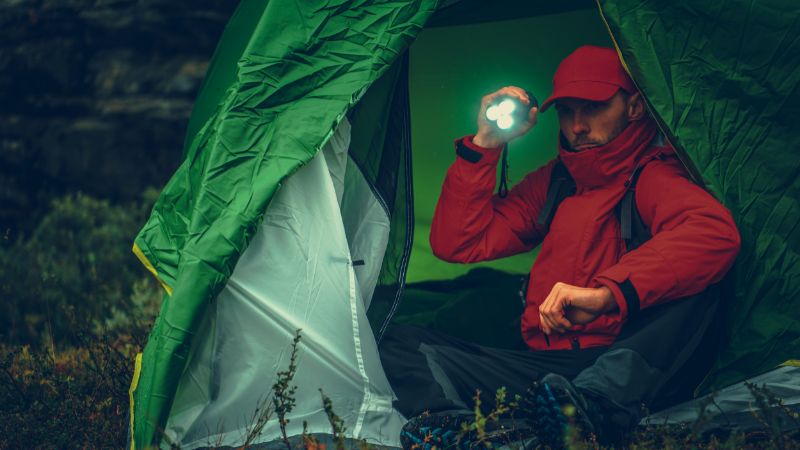
Making the Right Choice
Understanding flashlight waterproof ratings is crucial to ensuring you select a product that meets your specific needs and environment. Whether you require a light that survives a rainstorm, operates under a garden hose, withstands sea storms, or handles submersion in a river, knowing the right IPX rating is key to maintaining reliable performance.
By carefully considering where and how you plan to use your flashlight, you can confidently choose the appropriate IPX rating that guarantees durability and resilience under any conditions. Equip yourself properly, and never be caught off guard by rain, splashes, or submersion again.
Don’t just pick any flashlight—choose one that stands up to the demands of your adventures, proving reliable no matter how much water gets in the way.
Looking for a waterproof flashlight manufacturer?
At M&F Optoelectronics, we specialize in manufacturing high-quality waterproof flashlights designed to meet diverse industrial needs. Our products feature a range of IPX ratings, ensuring performance and durability for various applications, from outdoor expeditions to demanding work environments. Partner with us to discover our comprehensive selection and find the ideal solutions tailored to your business requirements.







